The PATRIOT is the U.S. Army's most advanced air defense system. Capable of defeating both high performance aircraft and tactical ballistic missiles, it is the only operational air defense system that can shoot down attacking missiles. A PATRIOT battery (i.e., the basic firing unit) consists of a phased array radar, an engagement control station, computers, power generating equipment, and up to eight launchers, each of which holds four ready-to-fire missiles. There are about 90 soldiers assigned to a battery, but three soldiers in the engagement control station are the only personnel required to operate the battery in combat. The first combat use of PATRIOT occurred in Saudi Arabia and Israel during Operation Desert Storm.
Raytheon Company Missile Systems Division is the prime contractor for the PATRIOT system. The Martin Marietta Corporation is a principal subcontractor and assembles the missiles in Orlando, Florida. In addition to U.S. units, the PATRIOT is deployed with the military forces of Germany, the Netherlands, Japan, Italy, Saudi Arabia, and Israel.
See the PATRIOT photo collection
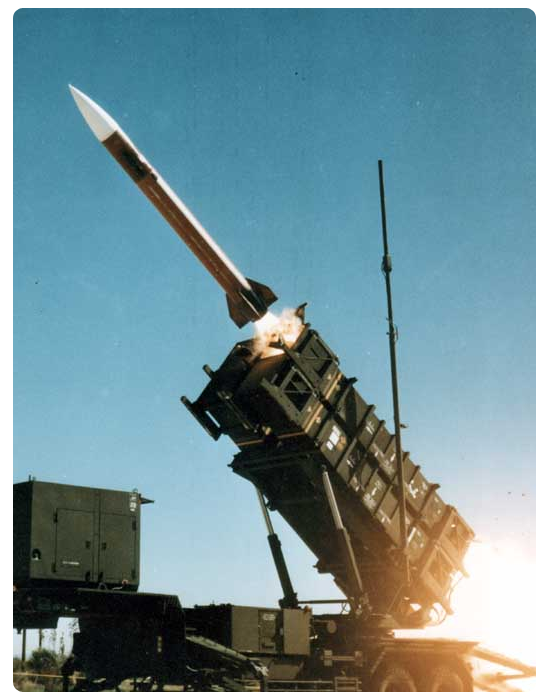
System Chronology
|
15 October 64 The Secretary of Defense directed that the Army Air Defense System for the 1970s (AADS-70s) program name be changed to Surface-to-Air Missile, Development (SAM-D). 16 August 65 SAM-D became project managed at MICOM. Its charter was issued on 10 November 65. February 66 The Secretary of Defense authorized SAM-D to enter Contract Definition. A Raytheon-Martin Marietta team competed with two other teams-Hughes-Douglas and RCA-Beech-to establish a system concept with the performance required to meet the Army's needs. August 66 The Army selected Raytheon as one of three companies to compete for the SAM-D contract. May 67 The Secretary of Defense selected Raytheon's Missile Systems Division as the prime contractor for the SAM-D project. He also decided that the system would enter an Advanced Development period to demonstrate its functionally unique features, while minimizing the financial risks of full-scale Engineering Development. November 69 First launch of the SAM-D missile. 1970 Raytheon's contract was expanded to include an Engineering Development Definition (EDD) effort to apply system engineering methods to the latest update of the 1980-1990 threat and system performance requirements established by the Army Air Defense Evaluation Board. 30 September 71 A special task group reported that the Advanced Development objectives for SAM-D had been met or exceeded in most cases. April 73 The SAM-D engineering development phase began. 29 December 73 The first SAM-D engineering development program firing occurred. January 74 Congress directed DOD to perform a Cost and Operational Effectiveness Study. The completed study was given to Congress in April 74 and reaffirmed the need for a High-to-Medium Air Defense (HIMAD) system with SAM-D's characteristics. 10 January 74 The Deputy Secretary of Defense issued a memorandum directing that the SAM-D program be reoriented to permit early flight verification of the track-via-missile (TVM) guidance system and to emphasize greater austerity. The austere SAM-D II version differed from the basic SAM-D because several hardware items had been simplified or like items reduced. February 74 The Secretary of Defense significantly reoriented the SAM-D program to demonstrate the Track-Via-Missile (TVM) guidance concept with actual flight tests (proof of principle). August 74 The SAM-D engineering development program was successfully completed. November 74 The SAM-D control test vehicle flight test program started. 1975 SAM-D successfully engaged a drone in its first engineering development test of the TVM guidance system at White Sands Missile Range (WSMR). 1976 Development of the Modular Digital Airborne Guidance System (MDAGS) missile began. January 76 As a result of the successful proof of principle (POP) program, SAM-D was approved for return to full-scale development (FSD). February 76 SAM-D reentered full-scale engineering development. 21 May 76The SAM-D Missile System was renamed the PATRIOT Air Defense Missile System. The name was chosen to emphasize the air defense system's role as a strong defender of American freedom and national beliefs. It also reflected the Bicentennial theme. The name change marked the system's reentry into FSD in February 76. Official Army approval of a proper name for the system was further evidence of the Army's commitment to developing and deploying the PATRIOT system. December 76 The first PATRIOT firing in an electronic countermeasures (ECM) environment took place at WSMR. February 77 The PATRIOT program was accelerated by moving the full-production decision from March 83 to April 80. The overall success of the first 23 firings and the need for the system in the field led to this decision. 2 June 77 A combined PATRIOT/Improved HAWK flight test was successfully conducted at WSMR as part of a Vice Chief of Staff, Army (VCSA)-directed PATRIOT/Improved HAWK interoperability assessment. The mission involved the simultaneous engagement of two targets in a severe countermeasures environment. It demonstrated the PATRIOT system's ability to provide acquisition data to the Improved HAWK. November 77 The PATRIOT mobile equipment was introduced. A successful firing test was conducted. September 78 The first MDAGS missile was successfully flight tested. That same month, the first full-up firing completed with warhead fuzing resulted in the destruction of a low-flying QF-86E drone. March 79The first production prototype ground equipment was used for a successful missile firing. November 79 The project office received the first production funding for the PATRIOT missile system. January - March 80 Operational Test (OT) II took place with a 70-move maneuver phase, a historical 50-aircraft "small war" tactical exercise, and nine modular digital guidance firings. Many air defense firsts were demonstrated, including live fire of multiple simultaneous engagements and battalion level triangulation of stand-off jammers. September 80 DOD's Defense Acquisition Review Council announced its decision to begin PATRIOT production. 1 October 80 A limited production contract for PATRIOT was issued. December 81 The first PATRIOT missile was delivered. May 82 The Army's first PATRIOT missile battalion was activated. 14 September 84 PATRIOT completed Follow-on Evaluation (FOE) III ahead of schedule. The highly successful test program demonstrated the system's capability to meet its operational requirements with production hardware and operational troops. October 84 The Army recommended deployment of PATRIOT to Europe. March 85 The first European PATRIOT battalion-the 4th Battalion/3d Air Defense Artillery (ADA)-was accepted and site certified. December 85 The first European PATRIOT battalion passed NATO Tactical Evaluation and became fully operational. September 86 PATRIOT's inherent antitactical missile (ATM) capability was demonstrated with an off-the-shelf standard production missile. Accomplished by ground equipment software changes only, PATRIOT intercepted a LANCE missile simulating an SS-21 and deflected it from its objective. 30 June 87 MICOM signed an agreement with Raytheon making the company the first major defense contractor selected by the command as a Certified Contractor. 1 June 88 Raytheon delivered the 2000th PATRIOT missile to the Army. July 88 The second post deployment build (PDB-2) software was successfully fielded, resulting in the deployment of PATRIOT ATM Capability One (PAC-1) and PATRIOT/HAWK Phase-1 interoperability capabilities. December 88 Production of the PATRIOT ATM Capability Two (PAC-2), a missile upgrade that increased the PATRIOT's kill capability to catastrophic kill, was authorized. June 90 Raytheon shipped the 100th PATRIOT radar and 4000th missile. August 90 PAC-2 was deployed to Saudi Arabia as part of Operation Desert Shield/Storm (ODS). August 90 The Post Deployment Build (PDB)-3 software release was accelerated in support of ODS. 3 August 90 The decision to deploy the PATRIOT during ODS resulted in the accelerated production of the PAC-2 missile. The first nine PAC-2 missiles were delivered 28 days later on 31 August, almost 5 months ahead of schedule. 1 September 90The first PAC-2 missiles were shipped in support of ODS. 1991 The Tactical Missile Defense Initiative (TMDI) was established as a result of lessons learned during ODS. The PATRIOT ATM and Extended Range Interceptor (ERINT) efforts were included in this initiative. TMDI evolved into the Joint Theater Missile Defense Project Office (JTMDPO) and later, into the Program Executive Office (PEO), Global Protection Against Limited Strikes (GPALS). January 91 PATRIOT was deployed to Israel and Turkey. 18 January 91 PATRIOT successfully intercepted and destroyed an Iraqi SCUD missile fired at Saudi Arabia. This was the first combat use of the PATRIOT, and the first time an air defense system destroyed a hostile tactical ballistic missile (TBM). 11 February 91 The MICOM Commander authorized a conditional release of PDB-3 software for all PATRIOT units. March 91 The PATRIOT Project Management Office initiated the Quick Response Program (QRP) hardware and software developments that would result in another update to the PDB-3 builds. March 91 The PAC-2 missile production acceleration was terminated with the ending of ODS. March 92 The QRP hardware and software (PDB-3 update) was fielded. July 92 The PEO, Air Defense signed the Acquisition Decision Memorandum to procure PATRIOT QRP hardware and Radar Enhancement Phase II hardware. 1993 PEO, GPALS was renamed PEO, Missile Defense and served as the executing agent for the PATRIOT and ERINT programs. FY 94 The Army selected ERINT to be the PAC-3 missile. This small, agile missile combined several state-of-the-art technologies to provide hit-to-kill lethality and increased fire power in an asset defense role against both TBMs and air breathing threats. FY 94 The Guidance Enhanced Missile (GEM) entered production. The GEM enhanced PATRIOT's ability to counter the threat as experienced in ODS. It was the post-war antitactical ballistic missile (ATBM) improvement to the PAC-2 missile. It could hit targets at higher altitudes and farther down range than the PAC-2 used in Desert Storm. FY 95 PATRIOT was fielded with the Alabama National Guard in the third and fourth quarters. This was the first PATRIOT system deployed with a National Guard unit. October 95 The PEO, Missile Defense approved full-rate production for the PAC-3 Configuration 2 Communication Enhancement Phase I (CE-1), which contained the bulk of the hardware modifications for Configuration 2. The last major upgrade prior to the fielding of the full PAC-3 capability, Configuration 2 included communications upgrades, improved radar performances, a self defense capability against anti-radiation missiles, and the ability to receive and process information from external intelligence sources. 13 December 95 A production contract for CE-1 was signed. 21 December 95 First Unit Equipped (FUE) was declared after the 2d/7th ADA, Fort Bliss, received the PAC-3 Configuration 1 system modification, which included several enhancements that improved overall system performance. |
PATRIOT Photos
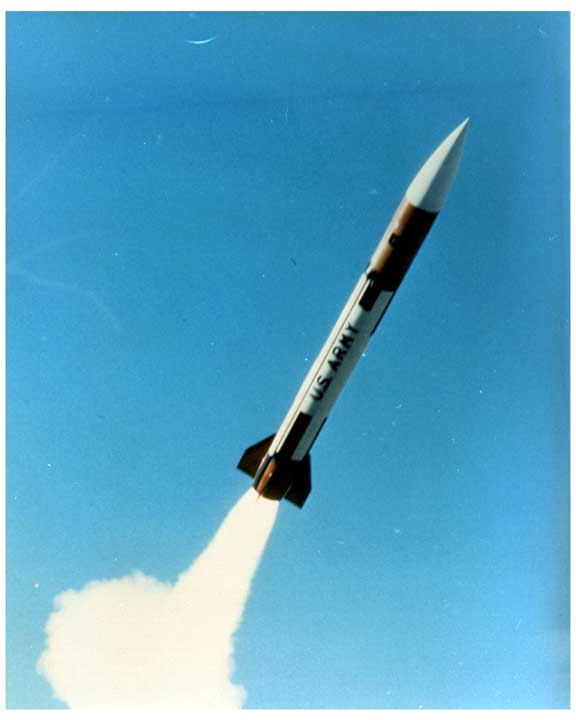
|
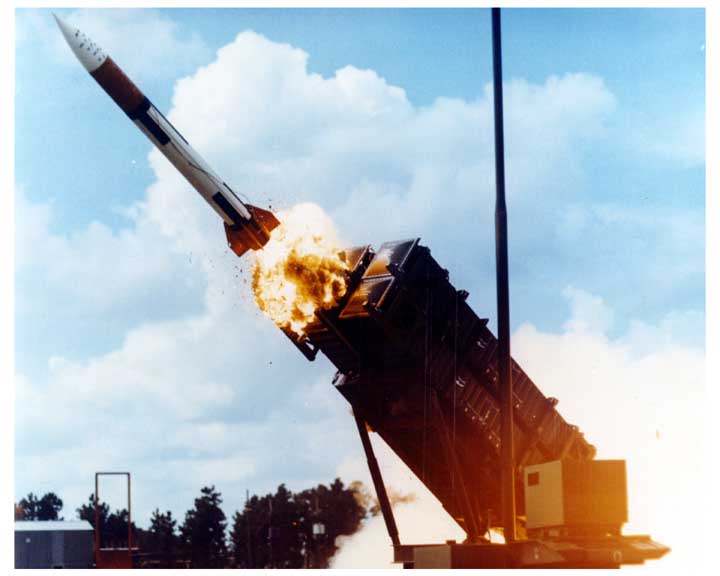
|

|
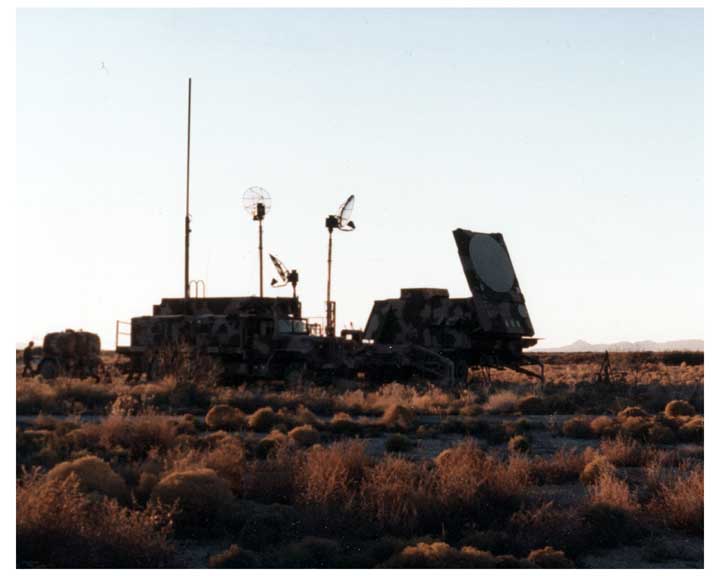
|
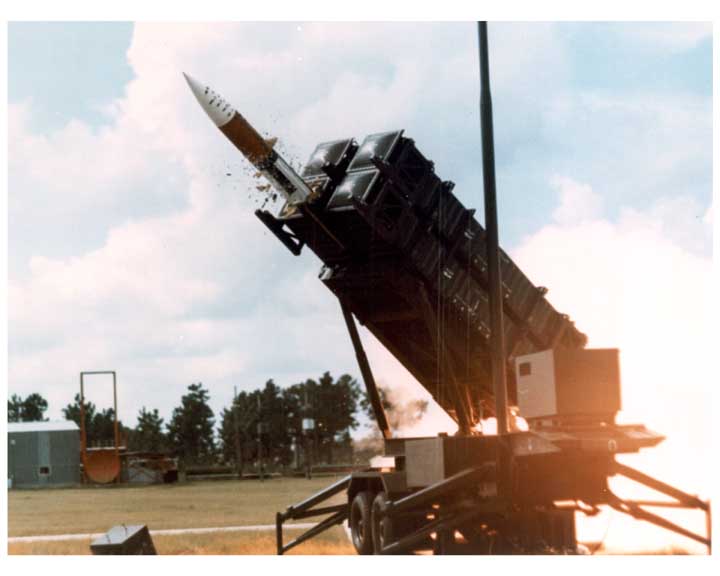
|

|
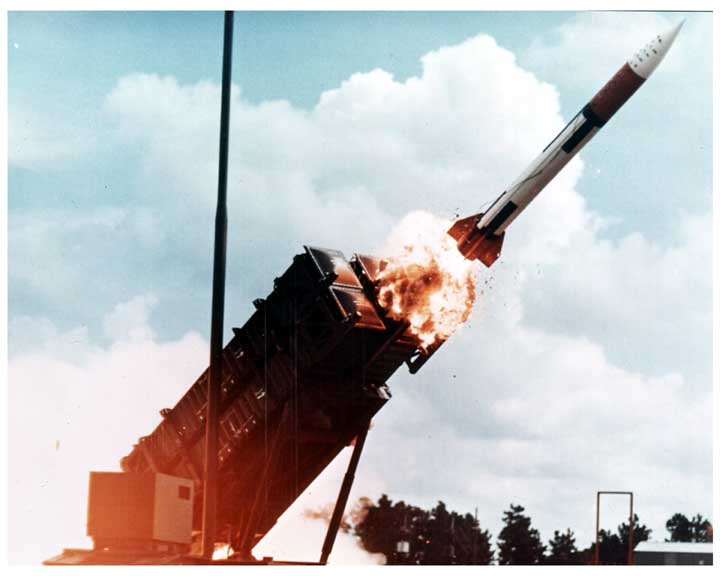
|

|
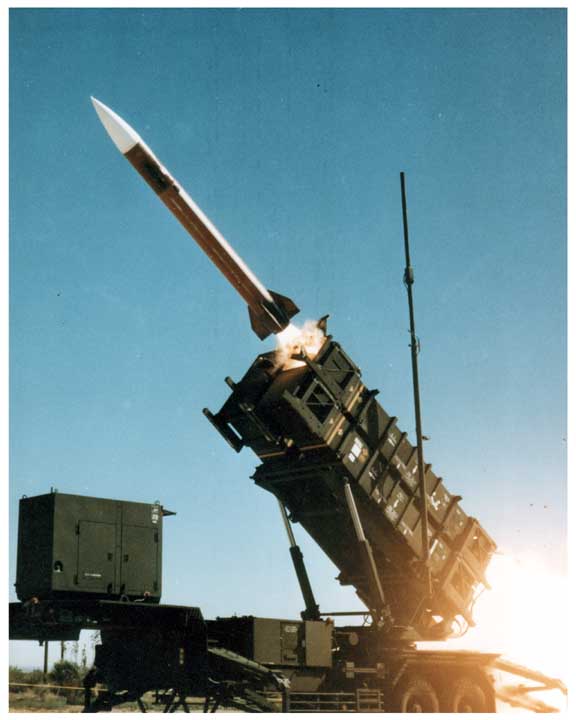
|
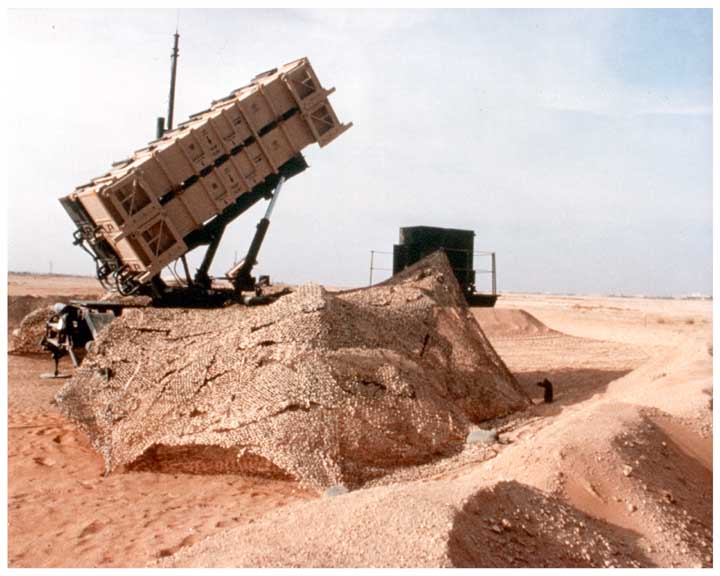
|

|
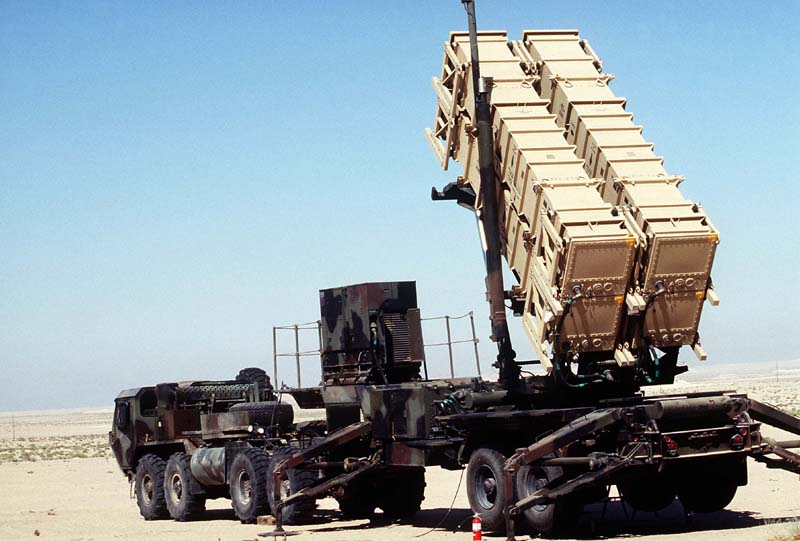
|

|

|
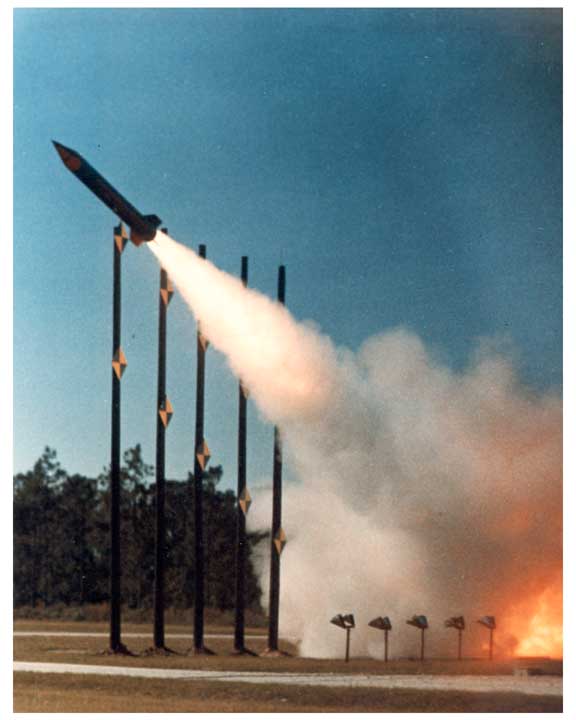
|
